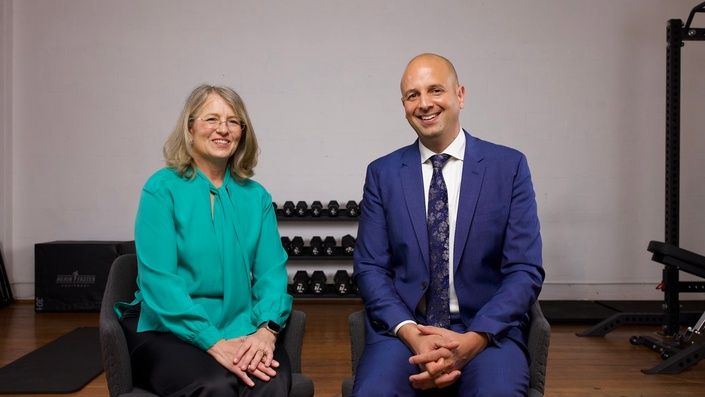Introduction
The Acute ACL Injury: Treatment Options Masterclass, taught by Associate Professor Jane Rooney and Mr Nigel Hartnett, explores the rationale and evidence behind operative and non-operative management of ACL injuries to help guide decision making for clinicians. This Executive Summary provides clinically relevant, actionable information that may be useful to health professionals.
Part 1: Background & ACL Management Options
Recent evidence has highlighted the potential for non-operative ACL management, as well as the ability for the ACL to heal. Regardless of which treatment pathway is taken, clinicians must understand and educate patients on the implications of ACL injury such as a higher risk of symptomatic knee osteoarthritis and a higher risk of both the index and contralateral knee. Further to this, it is crucial to educate our patients that reconstructive surgery is not a holy grail and will not guarantee a full return to sport or prevention of osteoarthritis.
- The ACL has the potential to heal; factors which may lead to healing are partial ACL tears (rather than ruptures), preservation of synovial membrane around the ACL and less than 10mm gap between the tear ends.
- Patella dislocation is the most common differential diagnosis for ACL injuries; however, these 2 injuries are often misdiagnosed for one another.
- It is difficult to objectively measure and ascertain who will cope with non-operative ACL management, and who is better suited to operative management.
- Evidence from both the KANON and COMPARE trials suggest that operative management is not superior to non-operative management of ACL injuries, however this decision should consider the individual’s circumstances and preferences.
- Lachman’s test is a sensitive and specific test to clinically assess an ACL injury but should always be complemented with testing of all other knee ligaments and structures.
Part 2: Treatment Options & Advantages/Disadvantages of ACLR Rehab
Both non-operative and operative management of ACL injuries are viable options, but this decision must take into account the patient’s choice, financial situation, activity demands and more. Clinicians must approach this conversation pragmatically and impartially to ensure true shared decision making and ultimately the best result for the athlete.
- Shared decision making is key when deciding which rehab route to take and should be based on the scenario at hand and what the patient wants and needs.
- Possible advantages of ACLR include suitability for those with a repairable meniscal injury, suitability for those with functional instability, and the ability to provide clearer timeframes around return to sport or work.
- Possible disadvantages of ACLR are a failure rate of up to 27% of patients who undergo surgery, ongoing numbness, pain or issues around the graft site, and the risk of infection and DVT.
- Possible advantages of non-operative management include the potential for a shorter rehab and return to sport time, lower costs than surgery, and similar outcomes compared to operative management at 2,5 and 10 year timeframes.
- Possible disadvantages of non-operative management include the possibility of longer time away from sport and increased costs if instability persists and surgery is indicated, and instability with possible secondary damage to other structures such as the meniscus.
Masterclass Preview
The decision to perform early ACLR compared to delaying ACLR following ACL injury is a very complex decision.
Enjoy this free preview of Nigel and Jane discussing who is, and who isn't approrpiate for a delayed ACLR.
Part 3: Decision Making & Rehab
Following ACL Injury
There is a lack of unanimous, objective criteria to guide clinicians and patients down the operative or nonoperative pathway, leaving this decision to be made based on factors such as patient choice and clinical reasoning as previously discussed. Putting this aside, it is also important to know when to change treatment pathways by monitoring episodes of giving way, feelings of instability or if their activity demands change.
- Those returning to high level demands of knee stability, with multi-ligamentous tears, repairable meniscal tears and osteochondral lesions, and presence of a knee dislocation are appropriate for early ACLR.
- Delayed ACLR is appropriate for those who need time to achieve a “quiet knee” (i.e., settle swelling, obtain good quads activation and a normal gait), those who have a functionally stable knee, and those where their social circumstances support it (e.g., they are in the twilight of their sporting career).
- Non-operative ACL management is appropriate for those who have a clinically stable knee, are able to adapt their life to not rely on an ACL (e.g., are happy to not return to cutting sports) or they are ‘copers’ (are functionally stable, display excellent strength and hopping ability and perform well on subjective questionnaires).
- Physical rehabilitation should focus on restoring knee stability, addressing psychological concerns, addressing impairments, establishment of clear, realistic goals, and should be progressively overloaded to prepare them for what they are returning to.


